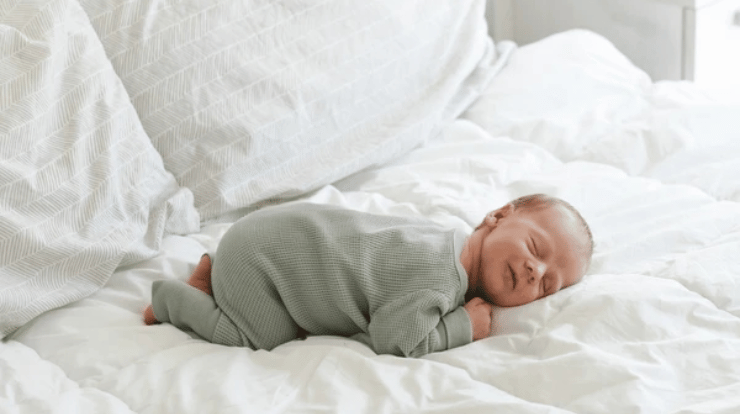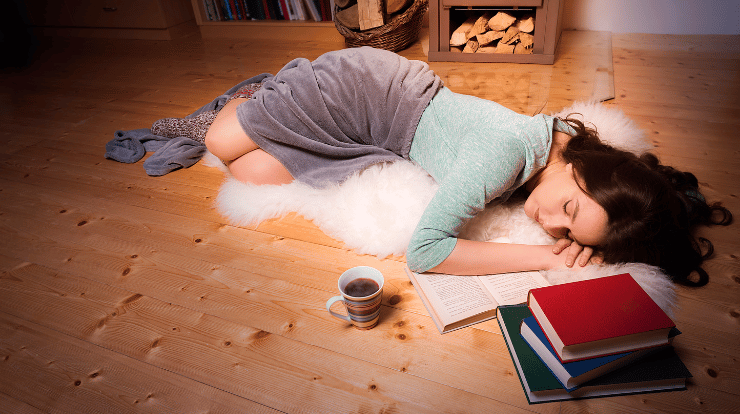
Many people have questions that:
- How to Sleep with a Stuffy Nose?
- How to Get rid of Stuffy Nose in Minutes?
- How to Reduce Stuffy Nose at Night?
A stuffy nose can be a real nuisance when it comes to getting a good night’s sleep. Whether it’s caused by a cold, allergies, or even just dry air, a stuffy nose can make it difficult to breathe comfortably and fall asleep. But don’t worry, there are several things you can do to alleviate your stuffy nose and get the restful sleep you need. In this blog post, we’ll discuss some effective strategies for sleeping with a stuffy nose.
How To Sleep With a Stuffy Nose?
If you’re looking for ways to get rid of a stuffy nose in minutes, there are several methods that can provide quick relief.
1. Avoid Sleeping on your Back:
Sleeping on your back can cause your tongue and soft palate to collapse to the back of your throat, which can obstruct your airway and make it difficult to breathe. Instead, try sleeping on your side, as this can help to keep your airway open.
2. Keep your Head Elevated:
To help reduce congestion and make it easier to breathe, try sleeping with your head elevated by using extra pillows or sleeping in a recliner. This can help to reduce the amount of mucus that drains into the back of your throat, which can cause congestion and difficulty breathing.
3. Clear your Nasal Passages Before Sleeping:
Blow your nose gently to clear out mucus and use saline nasal drops or sprays to help clear out nasal passages.
4. Keep your Room Cool and Well-ventilated:
A cool room can help to reduce inflammation and make it easier to breathe, so try to keep your bedroom at a comfortable temperature. Make sure the room is well-ventilated too, as this can help to reduce congestion.
5. Use a Warm Compress:
Applying a warm compress to your face can help to open up nasal passages and reduce inflammation.
6. Avoid irritants:
Try to avoid things that can irritate your nose, such as cigarette smoke and strong chemicals.
7. Keep your Allergies Under Control:
If you have allergies, it’s important to keep them under control, as allergies can cause inflammation in the nasal passages and make it difficult to breathe.
8. Use a Humidifier:
A humidifier can add moisture to the air, which can help to clear out nasal passages and reduce congestion. This can be especially helpful if the air in your bedroom is dry. Running a humidifier in your bedroom while you sleep can help to keep the air moist, which can reduce inflammation and help to clear out mucus.

9. Take a Hot Shower or use a saline Nasal spray:
Taking a hot shower before bed can help to open up nasal passages and clear out mucus, making it easier to breathe. You can also use a saline nasal spray to moisturize the inside of your nose and reduce inflammation.

10. Use Nasal Strips or a Nasal Dilator:
Nasal strips and dilators can help to open up nasal passages and make it easier to breathe. They work by physically pulling open the nostrils or by keeping the nasal passages open. Nasal strips can be applied to the outside of the nose, while nasal dilators are inserted into the nostrils.

11. Try using a Nasal Decongestant:
Over-the-counter nasal decongestants can help to shrink the blood vessels in your nose, which can reduce inflammation and make it easier to breathe. However, these should only be used for a short period of time as overuse can make congestion worse.

12. Try using a Nasal Irrigation System:
Nasal irrigation systems, such as neti pots, can help to flush out mucus and reduce inflammation in the nasal passages.

13. Try using Essential Oils:
Some essential oils, such as eucalyptus and peppermint, can help to open up nasal passages and reduce inflammation.

14. Try using a Nasal Pillow Mask:
A nasal pillow mask is a type of sleep apnea mask that is designed to fit into the nostrils, which can help to keep the airway open and make it easier to breathe.

15. Try using a Chin Strap:
A chin strap is a device that is worn around the chin to help keep the mouth closed while you sleep. This can help to reduce snoring and make it easier to breathe.

Is it Dangerous to Sleep With a Blocked Nose?
Sleeping with a blocked nose can be uncomfortable and can disrupt your sleep, but it is generally not considered to be dangerous. However, in some cases, a blocked nose can be a symptom of a more serious underlying condition, such as sleep apnea, which can have serious health consequences if left untreated.
Sleep apnea is a sleep disorder in which a person’s breathing is repeatedly interrupted during sleep. This can cause snoring, choking, and pauses in breathing, which can lead to poor sleep quality, daytime fatigue, and an increased risk of heart disease, stroke, and other health problems. If you have a blocked nose that is accompanied by other symptoms such as snoring, choking, or pauses in breathing during sleep, it’s important to consult with a healthcare professional.
Nose Blocked at Night On One Side
A blocked nose on one side at night can be caused by a number of factors, such as nasal congestion, sinusitis, or a deviated septum. Nasal congestion can be caused by a cold, allergies, or exposure to irritants. Sinusitis is an inflammation of the sinuses, which can cause pain, pressure, and a blocked nose. A deviated septum is a condition in which the cartilage and bone in the nose are off-center, which can also cause a blocked nose on one side.
The Best Position to Sleep With a Stuffy Nose
The best position to sleep with a stuffy nose is to sleep propped up on your back with an extra pillow. This can help to keep the nasal passages open and allow for better breathing. Sleeping on your side with a pillow to prop yourself up can also be helpful.
You can also try using a special wedge-shaped pillow, which can elevate your head and upper body to reduce nasal congestion. In addition, using a humidifier in the room can help to keep the air moist and ease congestion, and using a saline nasal spray before going to bed can help to relieve stuffiness.
It’s also important to avoid allergens such as dust, pet dander, and pollen, which can aggravate nasal congestion. And avoid eating heavy meals and drinking alcohol or caffeine before bedtime.
How to Sleep With a Stuffy Nose While Pregnant?
To sleep with a stuffy nose while pregnant, you can try using a humidifier in your bedroom to add moisture to the air and help clear nasal congestion. You can also try elevating your head with an extra pillow to help drain mucus and relieve pressure.
Avoiding irritants such as cigarette smoke, strong odors, and cold air can also help reduce nasal congestion. Additionally, you can try using saline nasal sprays or nasal decongestant sprays, as long as they are approved for use during pregnancy by your healthcare provider. It’s important to consult with your healthcare provider before taking any medication while pregnant.







